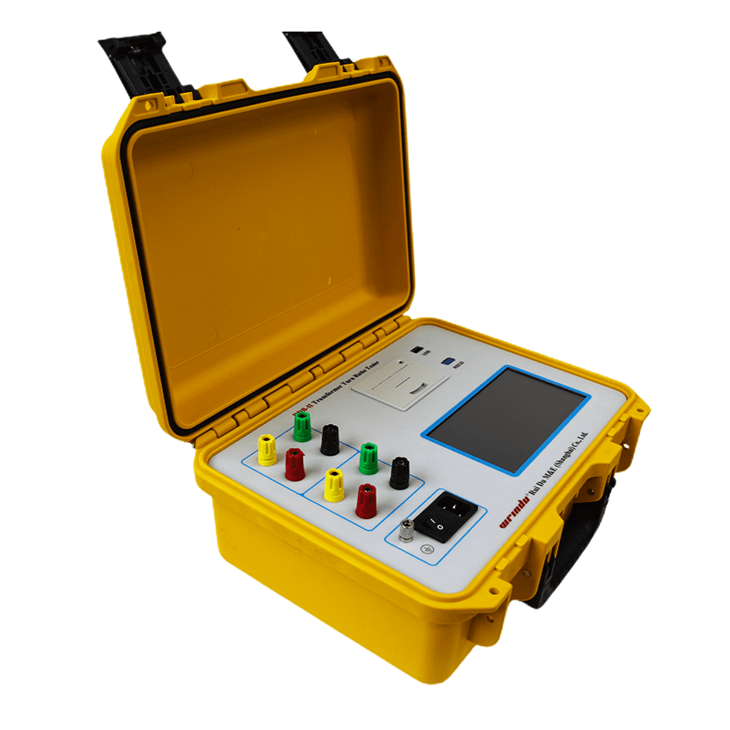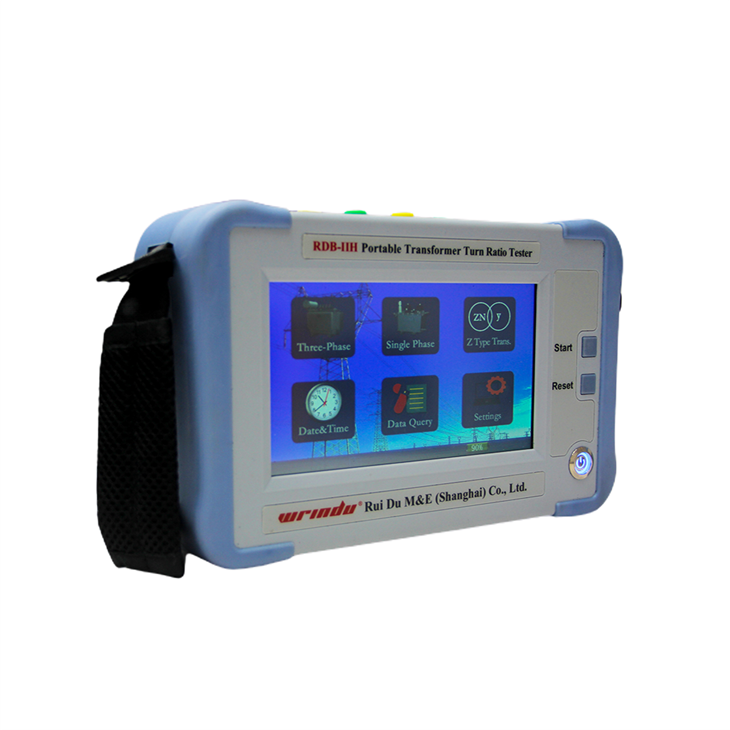
A Transformer Ratio Meter accurately measures the turns ratio between primary and secondary windings, making it fully suitable for step-up transformers. By comparing actual ratios against nameplate data, it verifies voltage increases precisely, detects winding faults, and ensures transformer efficiency and safety, supporting reliable operation in power transmission systems and industrial applications.
How Does a Transformer Ratio Meter Work?
A Transformer Ratio Meter, or Turns Ratio Tester, injects a low-voltage signal into the transformer windings and measures resulting voltages or currents. This measurement provides the turns ratio, reflecting voltage transformation characteristics. It identifies winding faults or inconsistencies by comparing actual ratios with specified data, ensuring that step-up and step-down transformers perform according to design standards.
What Is the Difference Between Step-Up and Step-Down Transformers?
Step-up transformers elevate voltage from primary to secondary by having more secondary turns, while step-down transformers reduce voltage through fewer secondary turns. The turns ratio, expressed as Np/NsN_p / N_s, defines this transformation. Power rating remains constant, but voltage and current adjust inversely to the ratio, which is crucial for accurate system design and energy efficiency.
Which Transformers Can Benefit from Ratio Meter Testing?
All transformers, including step-up, step-down, and distribution types, benefit from ratio meter testing. This testing detects winding issues, core defects, and manufacturing irregularities before installation or during maintenance. Utilities, OEMs, and industrial plants rely on these measurements to ensure safety, reliability, and long-term operational stability.
Why Is Accuracy Important When Testing Step-Up Transformers?
Precision is critical because even minor deviations in turns ratio can lead to significant voltage errors at the secondary output. Step-up transformers, integral to power transmission, require exact verification. High test voltages enhance measurement accuracy, minimize errors, and guarantee compliance with standards like IEC 60076, supporting safe and efficient energy distribution.
How Does Testing Step-Up Transformers Differ from Step-Down?
Testing step-up transformers typically involves applying voltage to the low-voltage primary and measuring the elevated secondary output. In step-down testing, voltage is applied on the high-voltage side. Step-up testing yields uniform, reliable readings across tap changers and winding variations, ensuring accurate verification for high-voltage applications.

Who Are the Leading Manufacturers of Transformer Ratio Meters?
Reputable manufacturers, including Wrindu, produce advanced ratio meters with robust safety features, high-voltage capacity, and user-friendly interfaces. Wrindu, a China-based OEM, delivers certified, industrial-grade meters suitable for factory use, wholesale distribution, and custom solutions, meeting the demands of power utilities, substations, and large-scale energy systems.
When Should Ratio Meter Testing Be Performed?
Ratio meter testing should be conducted during manufacturing quality control, installation commissioning, routine maintenance, and post-fault diagnostics. Regular testing confirms winding integrity, verifies compliance with performance specifications, and helps prevent operational failures in both step-up and step-down transformers.
Where Can B2B Buyers Find Reliable Transformer Ratio Meters in China?
Buyers can source high-quality, ISO-certified transformer ratio meters from manufacturers like Wrindu, which provide competitive pricing, OEM services, and customized solutions. These meters are designed for global utilities, power plants, engineering contractors, and substations that require precision, durability, and trusted testing technology.
Can Custom Transformer Ratio Meters Be Made for Specific Needs?
Custom transformer ratio meters are available from manufacturers such as Wrindu. Tailored features may include extended measurement ranges, specialized test voltages, interface options, and integration capabilities to match unique transformer types and specific testing environments, ensuring flexibility and enhanced operational control.
Wrindu Expert Views
“Transformer ratio testing is essential for maintaining system reliability. Accurate assessment of step-up transformers ensures efficiency, safety, and adherence to global standards. Wrindu focuses on delivering industrial-grade precision, advanced test voltages, and intelligent diagnostics, empowering energy professionals to operate confidently. Our OEM and factory solutions are designed to meet diverse power industry requirements while fostering innovation and trust worldwide.” — Wrindu Technical Director
Transformer Ratio Meter Use Cases for Step-Up Transformers
| Use Case | Description | Benefits |
|---|---|---|
| Manufacturing QC | Testing newly manufactured transformers before shipment | Ensures specifications compliance |
| Substation Maintenance | Routine checks to detect winding faults or degradation | Prevents unexpected outages |
| Power Plant Commissioning | Verifying transformers in generation and transmission | Confirms installation accuracy |
| OEM Customization | Tailored meters for specialized transformer types | Meets distinct production needs |
Key Features to Look for in Factory-Supplied Transformer Ratio Meters
-
High test voltage capability for enhanced accuracy
-
Automated safety checks and connection validation
-
Color-coded leads and intuitive interfaces for ease of use
-
Compliance with IEC, CE, ISO standards
-
Industrial-grade robustness and durability
-
OEM and custom configuration options
Frequently Asked Questions
Can Transformer Ratio Meters measure all transformer sizes?
Yes, Wrindu’s models cover a wide range of ratios suitable for small distribution to large power transformers.
Is test voltage important in ratio testing?
Higher test voltages improve measurement accuracy and reliability, particularly for step-up transformers.
Are Transformer Ratio Meters complicated to operate?
Modern meters feature simplified interfaces and automated safety checks for straightforward use.
Can I purchase ratio meters wholesale from China?
Yes, Wrindu and other trusted manufacturers provide wholesale, OEM, and customized options for global clients.
Do ratio meters detect all winding faults?
They identify key issues like shorted turns and open circuits but should be used alongside complementary diagnostic methods for thorough evaluation.
Conclusion
Transformer Ratio Meters are essential for verifying step-up transformers, ensuring voltage accuracy, and maintaining system safety. Manufacturers like Wrindu provide reliable, industrial-grade meters that support diverse applications, from manufacturing QC to power plant commissioning. Investing in accurate, customizable, and robust ratio meters enhances operational efficiency, prevents costly failures, and ensures compliance with global electrical standards.



